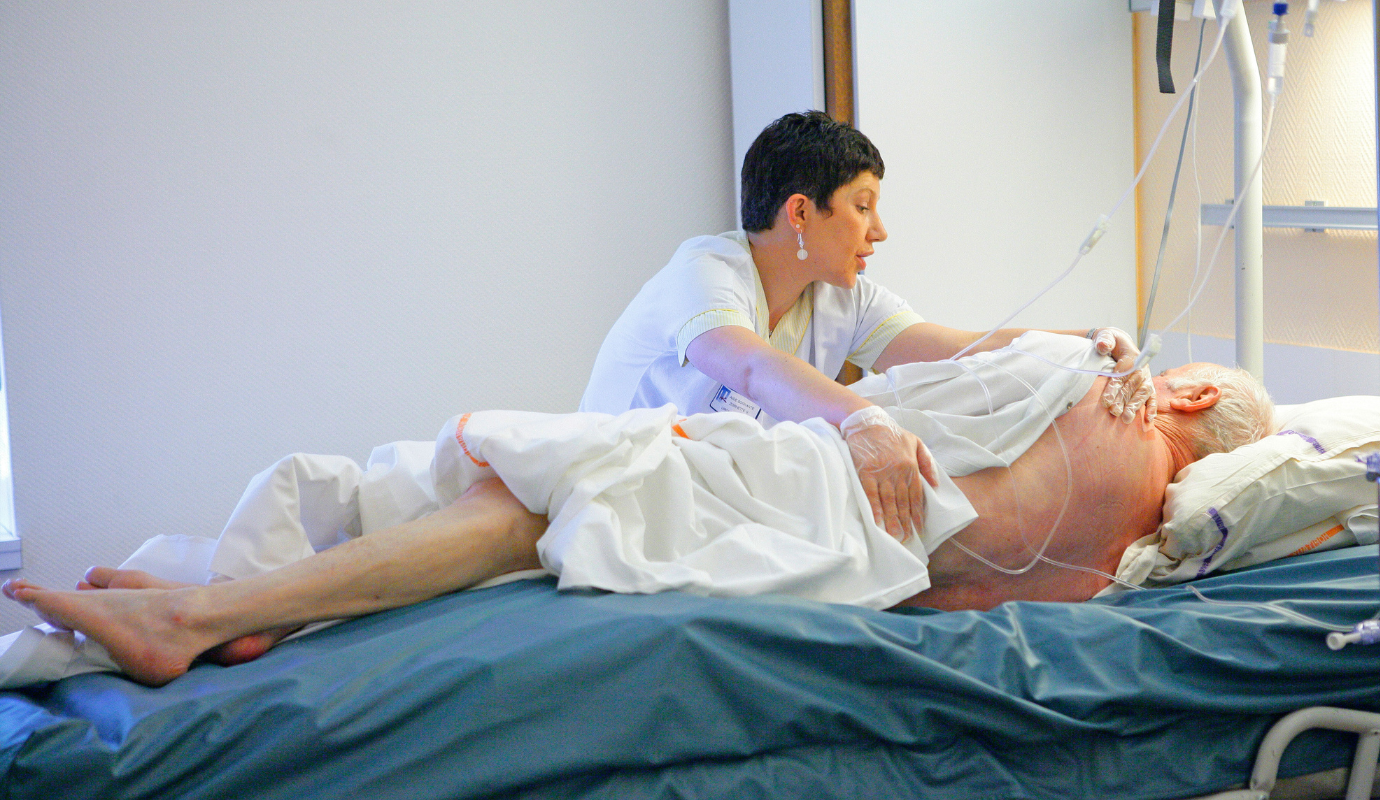What is Repositioning
Repositioning is a change in the individual's position whether by themselves or assisted. It is important in the prevention of pressure ulcers. The aims of repositioning are to reduce or relieve the pressure on the area at risk, maintain muscle mass and general tissue integrity and ensure adequate blood supply to the at risk area.
Frequency Of Repositioning for Preventing Pressure Ulcers
In a lying position, the general advice is to change position every 2 to 4 hours. The repositioning is often undertaken to move the individual to a totally different position. In a seated position, the general recommendation is to reposition twice per hour, for a couple of minutes, to allow blood supply to be restored and to reduce the magnitude and duration of cell deformation.
How to Reposition When Lying
Changing a patient's position in bed every 2 hours helps keep blood flowing. This helps the skin stay healthy and prevents pressure ulcers.
 Gently pull the patient's shoulder and hip toward you. Repeat the action until the patient is in the right position. Take note that the patient's ankles, knees, and elbows are not resting on top of each other. The patient's head and neck are in line with the spine, not stretched forward, back, or to the side.
Gently pull the patient's shoulder and hip toward you. Repeat the action until the patient is in the right position. Take note that the patient's ankles, knees, and elbows are not resting on top of each other. The patient's head and neck are in line with the spine, not stretched forward, back, or to the side.
How to Reposition When Seated
Tilting
Seat tilt to at least 30° for at least 5 minutes, twice per hour give a reduction of load on the buttocks and increases blood flow. The longer the individual stays in this tilted position, the better the restoration of perfusion to the tissues and the greater the reduction in tissue deformation.
Tilting and Reclining
 The seat tilt over 35°, combined with a 30° recline showed the most significant reduction of load. It is important to tilt the seat first and recline the backrest afterwards to reduces the tendency for the individual to slide out of the chair. When returning back to upright seating, the backrest should be reclined first followed by tilting the seat up to a normal seat angle.
The seat tilt over 35°, combined with a 30° recline showed the most significant reduction of load. It is important to tilt the seat first and recline the backrest afterwards to reduces the tendency for the individual to slide out of the chair. When returning back to upright seating, the backrest should be reclined first followed by tilting the seat up to a normal seat angle.
Standing

 Standing is a very good way to offload the buttocks, as the bottom will be totally without loading. To achieve the individual to stand in a stable and comfortable way, adequate support measurements should be taken. For example, the assistance of a care giver, a stable support like a table, or standing supports like bars or a raiser.
Standing is a very good way to offload the buttocks, as the bottom will be totally without loading. To achieve the individual to stand in a stable and comfortable way, adequate support measurements should be taken. For example, the assistance of a care giver, a stable support like a table, or standing supports like bars or a raiser.
Besides, the use of manual and power wheelchairs with standing options. Standing for 30 minutes, or more, per day reported fewer pressure ulcers. Furthermore, standing shows improvements in lung function, bone density, and gastrointestinal functioning, improvement in health-related quality of life.
Lying
Transferring to a lying position is another good method to totally offload the bottom.
References:
Repositioning for pressure ulcer prevention in the seated individual
Frequency of repositioning for preventing pressure ulcers in patients hospitalized in ICU
Turning Patients Over in Bed



